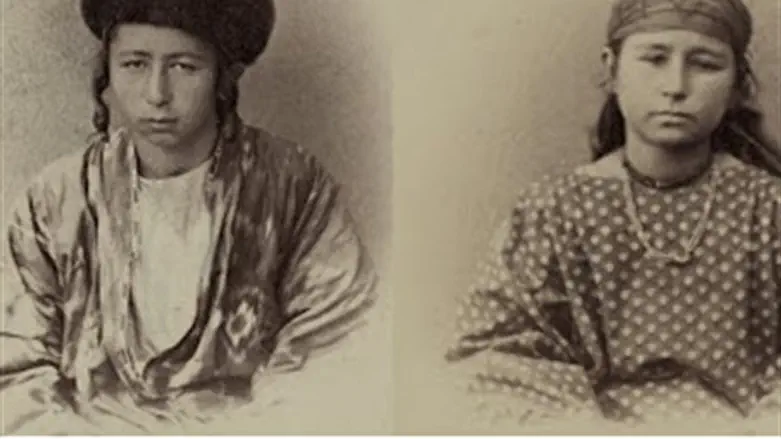
At right and on the main page are the groom Barukh and the bride Khanna, two separate portraits joined (c 1870).
The wedding ceremony of Barukh and Khanna, circa 1870, is pictured below. The bride and groom are beneath a tallit serving as the chuppa (canopy). Channa is the tiny figure under a "burqua," according to the original caption. The man in the center is extending a cup of wine as part of the ceremony -- sheva brachot, according to the caption. The two mothers, wearing turbans, are on the sides of the bride and groom.

Today, we post photos from another group of pictures, the wedding of Barukh and Khanna around 1870.
Signing the ketuba, the marriage contract. The bride (peaking out from under her burqua) and the groom are already under the prayershawl, tallit, with their mothers on either side.
At every Orthodox wedding, the bride's veil is placed over her face by the groom for the ceremony, and at Hassidic weddings to this day, brides have their faces covered with an opaque veil (called dektich) at the ceremony, symbolizing the wedding of the Patriarch Jacob to Leah, whose face was covered.
A party for the women and girls on the eve of the wedding. Click here to see Barukh sitting with the men
Earlier, the groom met with Khanna and her parents
The Bukhari Jewish families discuss the dowry prior to a wedding(circa 1870). The caption identifies the two bundles behind them as the dowry
Original caption: "A group of people escorting the bride and groom (the couple on the far left) to a house"




